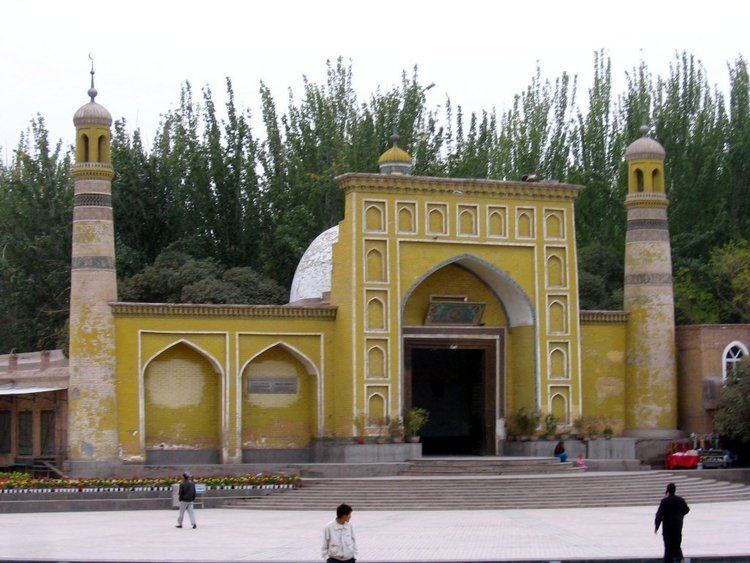Ecclesiastical or organizational status Mosque Opened 1442 Architectural type Mosque | Completed 1442 Capacity 20,000 Number of minarets 3 | |
 | ||
Similar Jiaohe Ruins, Afaq Khoja Mausoleum, Khunjerab Pass, Kizil Caves, Muztagh Ata | ||
Amazing view of uyghur prayers for ramadan at kashgar s id kah mosque
The Id Kah Mosque (Uyghur: ھېيتگاھ مەسچىتى, Хейтгах Месчити Hëytgah Meschiti, Chinese: 艾提尕尔清真寺; pinyin: Àitígǎěr Qīngzhēnsì) (from Persian: عیدگاه Eidgāh, meaning Place of Festivities) is a mosque located in Kashgar, Xinjiang, China.
Contents
- Amazing view of uyghur prayers for ramadan at kashgar s id kah mosque
- Kashgar s id kah mosque welcomes muslims for ramadan prayers
- History
- References
Kashgar s id kah mosque welcomes muslims for ramadan prayers
History
It is the largest mosque in China. Every Friday, it houses nearly 10,000 worshippers and may accommodate up to 20,000.
The mosque was built by Saqsiz Mirza in ca. 1442 (although it incorporated older structures dating back to 996) and covers 16,800 square meters.
In 1933, on August 9, the Chinese Muslim General Ma Zhancang killed and beheaded the Uighur leader Timur Beg, displaying his head on a spike at Id Kah mosque.
In March 1934, it was reported that the Uighur emir Abdullah Bughra was also beheaded, the head being displayed at Id Kah mosque.
In April 1934, the Chinese Muslim general Ma Zhongying gave a speech at Id Kah Mosque in Kashgar, telling the Uighurs to be loyal to the Republic of China Kuomintang government at Nanjing.
On 30 July 2014, the imam of the mosque, hotelier Jume Tahir, was stabbed to death shortly after attending morning prayers.
